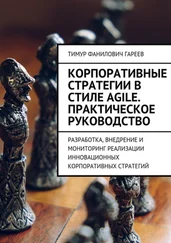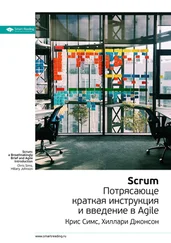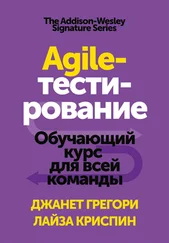An Agile coach or Scrum Master is supposed to facilitate team meetings, but doing so can be challenging. If a few members are talking rapidly, a facilitator might feel that the members are “on a roll” and be hesitant to interfere.
An introvert—by definition—will find that situation emotionally taxing. Even if asked their opinion, they are not likely to keep the floor long enough to actually convince anyone. It is therefore reasonable to assume that introverts might prefer to first communicate in written form and meet in person only if it is necessary.
An interesting fact about programmers as a group is that they think they are extroverts. 18 Yet some psychological studies indicate that programmers actually tend to be introverts. 19 It is a complex issue, though, because other studies produce conflicting results on the question.
Regardless, there is still a problem, because while Agile appears to favor extroverts, the people at whom Agile methods are mostly targeted—software developers—have a high proportion of introverts, as a group, even though the actual percentage is unclear. Even if, say, 60% of programmers are extroverts—something that would be a counterintuitive career choice—forcing extrovert-favoring methods on the other 40% would be unfair and counterproductive.
It is also a problem because by sidelining introverts, teams suffer. According to Herz, “Entrepreneurial teams perform better when leadership is shared between individuals, but only if they have diverse personality traits. Moreover, teams dominated by extraverted members actually perform better under introverted leaders, 20 possibly due to their greater responsiveness to their employees' ideas.”
How did the Agile Manifesto come to be written to favor extroverts? Were the authors of the Agile Manifesto extroverts? It is hard to say, but the manifesto's stated preference for face-to-face communication aligns with what one of the authors had been writing shortly before their meeting. Alistair Cockburn had written extensively about how, in his opinion, face-to-face communication is the “most effective” form of communication. 21
So it is possible that one member of the group influenced the others—a member who seems to fit the profile of an extrovert, based on his high level of involvement in Agile community group initiatives.
Is it really true? Is face-to-face communication always best?
It depends . (There it is again.) We will dig into that question a great deal in Chapter 6, when we talk about how collaboration occurs for simple and complex issues.
What about the people who help Agile teams to define how they work? That is, Agile coaches and Scrum Masters? Do they tend to be introverts or extroverts?
We are not aware of a study on that question, but consider that in seeking such a job, one is looking for a role in which one is coordinating groups of people and encouraging face-to-face communication. It stands to reason that the job, as defined by Scrum and the Agile community, would attract people who like working with groups of people—in other words, extroverts. And it has been our experience that Agile coaches do, by and large, seem to be “people people,” although they are as varied as the people in any profession, and no two are the same.
If it is true—if Agile coaches and Scrum Masters lean slightly extroverted—then we have a slightly extrovert-leaning population advising a somewhat introvert-leaning population on how to work. What could go wrong?
Ignoring whether an Agile coach or Scrum Master is an introvert or extrovert or something in between, and following default Agile practices that favor extroversion can be detrimental if those practices are not what are actually preferred by the team members.
Does this matter? Is there actually a problem? What impact might this have?
Let's look at common complaints that we have heard from programmers who work on Agile teams.
“I can't focus! There are too many distractions and disruptions.”
“Too many meetings!”
“I don't actually want to know what everyone else is working on!”
“I don't actually want to self-organize! I want someone to get us organized so that I can code! I just want them to let me code the way that I want to.”
“I don't actually want to reach out to others for ad hoc discussions! I only do that as a last resort if I am really stuck.”
“Not enough attention is paid to technical issues!”
If these complaints are valid, it is a pretty bad state of affairs, because the true needs of programming teams are not being addressed by the Agile community; in fact, it is worse than that: programmers are being literally coerced, by organizations that adopt Scrum as a mandatory methodology, 22 into working in a way that is not suited to their personalities.
Coaches Should Not Assume
What has continued to amaze us is that if one asks an Agile coach, “Is Agile working?” the answer will usually be an emphatic yes followed by gushing about how productive teams are and how Agile has revolutionized software development. Yet if one asks the typical programmer—the very people who Agile was created for—they will have a different range of responses. In fact, it seems to us that most programmers have not had a very positive experience with Agile.
Studies at the University of Florida and the University of Notre Dame indicate that introverted team members tend to view their extroverted co-workers more negatively, whereas the extroverted co-workers do not seem to have that negative bias. 23 In other words, the introverts silently judged the extroverts negatively.
We think something like that might be happening among Agile teams. Agile coaches tend to be people-oriented, and therefore more extroverted than programmers on average, so they don't see a problem; programmers tend to be more introverted than average. 24 The Agile coaches think things are great. The programmers? Well, not so much.
The University of Florida and Notre Dame experiments might also indicate that extroverts tend to be relatively insensitive to how introverts are experiencing things, because if they were aware, they would probably not be so favorable in their own ratings of their introverted colleagues. That conclusion is also supported by a Yale study that indicated the introverts are generally more sensitive to the feelings of others. 25
This is why coaches should not assume that what they would prefer is what their team will prefer. Ask! And pay attention to what is being written and said, even if it goes against Agile dogma. For example, in her book Carved In Sand , Cathryn Ramin writes the following on page 33:
“… an endless stream of interruptions has become the norm. Researchers at the University of California, Irvine attempted to quantify the number of distractions and interruptions that occur among IT workers in a medium-sized office. They predicted that something would interfere with concentration every fifteen minutes, but on average, interruptions occurred every three minutes, and only two-thirds of the interrupted work was resumed on the same day.”
If this sounds like your organization, do you think that team members can focus? Ask them!
What about use of tools like Slack and Microsoft Teams? Are they too distracting? Consider this article in Nir & Far, “If Tech Is So Distracting, How Do Slack Employees Stay So Focused?”:
“Slack management leads by example to encourage employees to take time to disconnect. In an interview with OpenView Labs, 26 Bill Macaitis, who served as Slack's chief revenue officer and chief marketing officer, states, “You need to have uninterrupted work time … . This is why—whether I'm dealing with Slack or email—I always block off time to go in and check messages and then return to uninterrupted work.” 27
Читать дальше











